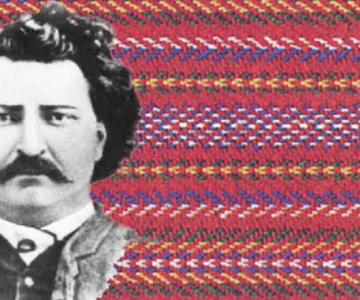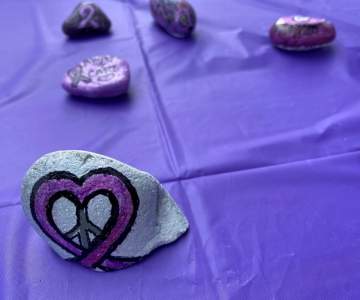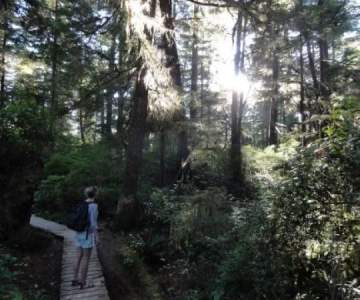Breadcrumb
Explore Stories
1 Minute Read
Community & Culture
This week across Canada, we remember the life and death of Louis Riel and his leadership advocating for the Métis Nation. On Nov. 16, we mark the anniversary of Riel’s execution. This act of remembrance is to honour Riel’s life and historic fight for justice.
At Interior Health, we are committed to our relationship with Métis Nation BC and are working collaboratively toward our shared goal of ensuring our health services are culturally safe and supportive of Métis People. This is an example of how we live out our IH vision: Health and well-being for all.
Take a moment to learn more about Louis Riel and the rich history of the Métis People.
Listen to the Interior Voices podcast and two episodes on Louis Riel Day where Métis Nation BC Regional Directors share their stories and reflections.
Check out the Métis Nation BC website for more information about Louis Riel.
Read about Aboriginal Health & Wellness at Interior Health.
We stand together with Métis employees and medical staff, and Métis People across the Interior region, as we reflect on the legacy of Louis Riel and our own commitment to address racism, discrimination and injustice.
2 Minute Read
Research & Innovation
Visit YOUR new www.InteriorHealth.ca for quick and easy access to health information in B.C.’s interior region.
This website includes features designed to connect you to Interior Health services and locations in your area. Health alerts will let you know if there is something you need to be aware of, from natural disasters to toxic drug alerts or vaccine updates. And you can subscribe for news and information delivered right to your inbox. Looking for something else? Check out the search feature (click on the magnifying glass at the top right of the screen) to get immediate access to health information, contact details and more.
Person-centred design
To get it right, we called on the experts and reached out to people like you to tell us how this new website should look, work and feel.
A public advisory group shared ideas on the website appearance, user experience, and navigation. Public members also worked alongside health-care experts, to identify the information that needs to be included. Public members on the project steering committee ensured the public perspective was always part of the decision-making process. The general public and other health-care organizations also contributed their ideas through a public survey, discovery workshops and focus groups. Thanks to the efforts of these dedicated public members, we have a website designed for the public, by the public.
These are some of the people who gave their time and ideas to this website. Thank you!
Looking for health stories? Please visit us at www.InteriorHealth.ca.
2 Minute Read
Research & Innovation
Our new website is search friendly. We understand that everyone likes to search for information differently, and we have organized the content and have developed our search options accordingly.
Using our website menu
Our navigation menu was organized strategically to streamline information and make it easy to find.
If you’re looking for general health information:
You can navigate through our Health & Wellness menu, which contains secondary menu groupings such as Accessing Care Through Technology, Environmental Health & Hazards, Healthy Living and Substance Use & Addiction. We also have a comprehensive About IH menu section to learn more about IH programs, services, career opportunities, and more
If you’re looking for health information targeted toward a specific audience:
You can navigate through our Information For menu to find specially selected content for different audiences. Some of the audiences in this menu are Aboriginal Communities, Businesses, Community Partners, Medical Staff, Parents & Guardians, Patients & Visitors and Seniors. There are also targeted menu options on our website for people looking to Get Involved or explore Career opportunities, including student opportunities.
Using our website search function
If your first instinct in this age of search engines is to click on the search icon, we have got you covered. Our advanced search feature was designed to replicate the experience of search engines like Google.
You can search:
By category
Using one of your recently searched terms
By popular topic
By quick links
You will even receive suggestions as you type:
Using a search engine
You can easily search for content on our website without entering it first. On all of our pages, we have included labels to communicate what the page content is about on search engines like Google. This means that when you’re searching for certain types of health-care information a search engine, results will be displayed for our webpages that have relevant content on this topic.
We’re effectively using keywords to capture what the page content is about, while also taking into consideration how users search, and what phrases they’re likely to use. All these measures will help you find our pages from search engines.
Explore other great website features
There are many enhanced features on our new website. Check out these posts highlighting some of them:
New Interior Health public website features unique on-page navigation
Find services & locations easily on new website
2 Minute Read
Research & Innovation
IH delivers programs and services to people across B.C.'s Southern Interior through facilities such as hospitals, clinics and community care homes.
The new IH public-centred website includes advanced search functions to connect you with services (Find a Service) and locations (Find a Location). These functions replicate the experience of searching through a search engine like Google.
Many options to search
You have many options to conduct your service or location search. You can search by:
Keyword
Category
Location
Distance
Our services and locations have been tagged and categorized appropriately to help connect your search to relevant results. Results will appear below (you can pick list or grid view) or you can use the map to view results (more on that in the next section).
Search visually through our map function
One of the exciting features of our new location and search function is the visual map, which creates a similar experience to browsing through Google Maps. After conducting a search, click on the “Show Map” button and you’ll see icons representing locations and services. You can click “Hide Map” if you’re finished browsing.
Once you click on an icon, you’ll be presented with the location title (linked directly to the location page) and the address/contact information for that location. If you are searching for a service, the service name will be above the location name in brackets (linked directly to the service page).
Showing results based on your current location (geolocation)
When you visit our website, you will be asked if you would like to reveal your current location. If you accept, your location will automatically be inputted into the address field when you search for a service or location, making it easy for you services/locations close to you.
When you have the map open, you can click on the blue target icon to visually highlight your current location.
Explore other great website features
There are many amazing features on our new website. Check out these posts highlighting some of them:
Many easy ways to search on IH’s new person-centred public website
New Interior Health public website features unique on-page navigation
2 Minute Read
Research & Innovation
It’s easy to “explore” content on our new person-centred website
When you visit a website you can navigate to a page by clicking on a navigation bar or by navigating through options on the menu. But what about when you get to the page itself? One of the unique features of Interior Health’s new website is called Explore This Page, which allows you to navigate to any section on a particular page and access the information you are looking for.
How “Explore this page” works
At the top of many content pages, you’ll notice the “Explore this page” drop-down menu:
Clicking on this will open up a menu that lets you jump to certain sections of the page, helping you access the exact information you’re looking for. The great thing about this function is the accuracy of the in-page links.
In addition, we often use expandable lines of text called accordions within sections so that you can quickly access the information you need within the section. From your mobile device you will be able to quickly scan through a section without having to scroll.
Quick access to the information you need with “Explore this page”
There are times where you will be directed to one of our webpages from a social media post, or even from hyperlinked text in another one of our webpages.
With the “Explore this page” function you are directed right to the exact section of the page you need to get to.
For example, check out these direct links to:
Board profiles on our Board of Directors page
Opioid Agonist Treatment (OAT) information on our Overdose Prevention & Treatment page
Food safety information on our Food Premises page
Check out other great website features
There are many enhanced features on our new website. Check out these posts highlighting some of them:
Many easy ways to search on IH’s new person-centred public website
Find services & locations easily on new website
2 Minute Read
Community & Culture
We are IH is a recognition campaign to spotlight Interior Health employees and medical staff – through pictures and stories.
Name: Nikole Johnson
Job Title: Care Aide
Years of Service: One year
Worksite: Talarico Place
Community: Castlegar
Ancestral Territory: Ktunaxa (Tun-ah-hah)/Kootenay Ktunaxa
Favourite Quote: "Be kind, always!" -Unknown
With a year under her belt, Nikole Johnson has discovered that being a care aide is more than as depicted. Her favourite thing about the job is seeing residents' faces light up when they see her after a few weeks off. She loves spending downtime interacting with those in her care: "It's always my honour to be involved in the stories they share about their lives."
"Working as a care aide while in nursing school has inspired me to continue practicing the fundamentals of health care, which always come back to compassion and kindness."
Nikole's proudest moments happen when she's able to make connections with residents and other staff members. She admits to being a bit shy: "It takes a bit of time to come out of my shell."
Nikole feels comfortable and supported at her workplace, which helps her form better relationships with those in her care.
Nikole's favourite hike around the Kootenays - Kokanee Creek
A fourth-year nursing student with the University of Victoria at Selkirk College, Nikole looks forward to continuing her position as a care aide while she finishes school and, hopefully, moves in to a new position with IH after graduation in 2022. Nikole would love to work in either community or maternity nursing. Who knows what the future will bring!
To enjoy the beautiful landscapes around Castlegar, Nikole enjoys going on walks with her two small dogs and getting in exercise. She also loves art, and creates her own realistic portrait drawings and acrylic paintings.
One of Nikole's favourite paintings, inspired by Bob Ross
Nikole's nomination keeps the We Are IH loop going:
Abby Murphy: “Abby will be starting her second year of nursing school at Selkirk College! She was so helpful when I first got hired, and really made me feel comfortable. She took the time to get to know me and made sure that no questions went unanswered." - Nikole Johnson
Stay updated with careers at Interior Health
Facebook | Instagram | LinkedIn
3 Minute Read
Health & Wellness
Community members who use drugs continue to die from an increasingly toxic and unregulated drug supply. Even occasional users can – and do – experience fatal overdoses.
The City of Penticton has been one of the hardest hit communities in the Interior region, with a fatal overdose rate of 59.3 deaths for every 100,000 people (BC Coroner’s Service, January-August 2021). By comparison, the fatal overdose rate for the entire Interior Health region over the same period is 41.9 deaths for every 100,000 people.
Fighting the stigma that surrounds the use of substances is one of the most important ways to combat the devastating reality of this poisoned drug crisis. The BC Coroners Service reports that many overdose deaths occur when people use substances alone. Dr. Theresa Tam, Canada’s Chief Medical Health Officer, states in her 2019 report about stigma that “Stigma can drive avoidance or delay of health care” and prevent people from seeking services or even disclosing their substance use – resulting in more people using drugs alone and dying from overdose.
The report says: “People and institutions with resources and power … influence what is considered to be ‘normal’ and ‘acceptable.’ ”
The City of Penticton recognizes the importance of anti-stigma education to help change the norm and has collaborated with Interior Health on a number of initiatives to help raise awareness in hopes of decreasing stigma within the community.
In August 2021, the City introduced a new series of overdose prevention articles in its community newsletter; this newsletter is distributed alongside each resident’s monthly utility bill. On Aug. 31, Overdose Awareness Day was recognized, and opioid crisis education and Take-Home-Naloxone training was offered to the public at Penticton’s Gyro Park. This same day, the City launched three anti-stigma training modules, created by the Canadian Centre on Substance Use and Addiction, for all City employees. Monthly in-person harm reduction and Take-Home-Naloxone training sessions are also being offered for all City staff and Council. One staff member commented that the courses have made them realize how much language matters when talking about substance use disorders, and it has changed how they discuss the topic with others.
“This is a complex issue and requires a community response. I work closely with City staff as well as community partners in my role and it is really encouraging to see this type of action taking place as we continue to see high rates of toxic drug deaths. Breaking down stigma helps remove barriers to care,” says Tanya Osborne, Interior Health Community Health Facilitator.
Through collaboration with the health authority and other agencies, the City is working hard to increase overdose prevention awareness and decrease stigma in the community. If your community wants to take a similar approach, please reach out to your local Community Health Facilitator for support or send us an email at hbe@interiorhealth.ca.
People who use drugs in Penticton are encouraged to have their drugs tested. Drop-off or in-person testing services are available at several locations.
3 Minute Read
Community & Culture
We are IH is a recognition campaign to spotlight Interior Health employees and medical staff – through pictures and stories.
Name: Charles Wincott
Job Title: Supervisor, Biomedical Engineering, IH West
Years of Service: Three
Worksite: Royal Inland Hospital
Community: Kamloops
Ancestral Territory: Secwépemc (She-whep-m) / Shuswap Interior Salish
Favourite Motto: “Live life to the fullest at work and in play and be true to yourself so that you can be true to others.”
At 23 years old, Charles Wincott joined the Navy. During a career spanning more than 20 years, he served as an electronics technician—repairing and maintaining radar, weapon control systems, countermeasures systems and periscopes.
Charles in Navy uniform
“I served on every class warship in the Canadian Navy including destroyers escorts (DDE), destroyers (DDH), frigates (CPF), replenishment vessels (AOR) and two classes of submarines (SSK).”
Charles had an affinity for photography and became an intelligence photographer on the ships during deployments. He also taught electronics at the Navel Fleet School in Esquimalt.
“My travels have taken me to all the continents,” says Charles. Highlights included visits to Russia and China, serving for UN forces in Haiti during the embargo in 1993, and living in the United Kingdom for two years while refurbishing the HMCS Corner Brook (a long-range hunter-killer submarine of the Royal Canadian Navy).
Charles’ Naval retirement package included two years of retraining. He chose Durham College in Ontario and completed the Biomedical Engineering Technologist program.
“This trade was a natural progression from my military career—perfect for someone with a questioning mind,” he says.
During a short hospital stay, Charles found himself asking, “How is that equipment looked after and repaired?’
His new career in biomedical engineering answers those questions. Charles has worked in Medicine Hat, Alta., several sites on Vancouver Island, and now for Interior Health. He has taken trade-specific training in respiratory, renal, anesthesia, and monitoring systems, among others.
“One of the things that I like most about this trade is the ability to continually learn new things and be challenged with complex problems.”
Last year, Charles took on the role of Supervisor for Biomedical Engineering in IH West—a role with its own set of challenges.
“Like my military role serving in the silent service (submarines), I enjoy working behind the scenes in my current role—to improve the world around me.”
In his free time, he enjoys doing home renovations and rebuilding a 1986 TVR 280i. Charles jokes that “neither seem to ever reach completion.” He also enjoys exploring the outdoors on a quad or side by side—but mostly spinning a good tale over a campfire.
We would like to thank Charles, and every person who has served our country. Thank you for sharing your stories, and for all that you do for Interior Health and your communities.
Read about other veterans working with Interior Health.
Stay updated with careers at Interior Health
Facebook: Interior Health | Instagram: interiorhealthbc
| LinkedIn: Interior Health Authority
2 Minute Read
Community & Culture
We are IH is a recognition campaign to spotlight Interior Health employees and medical staff – through pictures and stories.
Name: Ashley Latimer (she/her/hers)
Job Title: Medical Radiation Technologist
Years of Service: 11
Worksite: Cariboo Memorial Hospital
Community: Williams Lake
Ancestral Territory: Secwepemc (She-whep-m)/Shuswap Interior Salish
Favourite Quote: "Remember then that there is only one important time, and that time is now. The most important one is always the one you are with. And the most important thing is to do good for the one who is standing at your side. This is why we are here." - Jon J Muth
Growing up in Ontario, Ashley Latimer was always interested in anatomy and biomechanics. Her dad encouraged her to pursue a career in health care and after earning a Human Kinetics degree in Ottawa, Ashley decided that medical imaging would be a good fit for her interests and education.
"I was living and training in Southern Ontario and there were no real options for a full time position straight out of school," Ashley explains. She moved to Williams Lake to begin her career at Cariboo Memorial Hospital. "I took a chance and 11 years later it seems to have worked out."
Ashley is inspired by the people she works with and the patients they care for.
"For all the difficult situations we encounter on the job there is so much effort and care put into easing these situations," she says. "It's uplifting to see."
The dedication of her co-workers throughout the pandemic makes her proud to be a health-care worker.
In her free time, Ashley enjoys a number of sports and outdoor activities. At the moment her favourite hobby is golf, but she used to compete in roller-derby under the stage name Kelly Ka-POW-ski.
Ashley enjoys hiking around Whistler (Black Tusk in Garibaldi or Joffrey Lakes if you can catch it on a non-busy day).
"I'd highly recommend camping at Cariboo Lake, hiking Farwell Canyon or anywhere in Wells Gray Provincial Park," she says.
Post-pandemic, Ashley looks forward to traveling again.
Ashley's nomination keeps the We Are IH loop going:
“Medical Laboratory Technologist Anna Heppner works hard with a smile on her face everyday and does volunteer work with the community as well."- Ashley Latimer
Stay updated with careers at Interior Health
Facebook: Interior Health | Instagram: interiorhealthbc
| LinkedIn: Interior Health Authority
-
Load More
Showing 441 of 677
STAY CONNECTED
Receive news and alert posts, and Stories@IH blog posts, right to your inbox!









